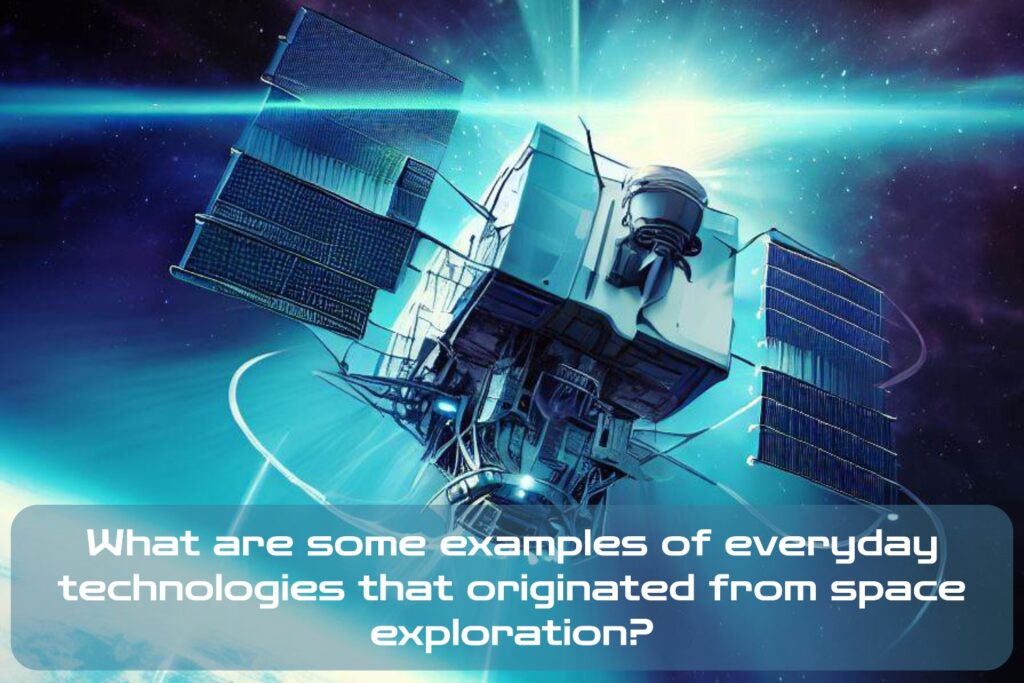The Surprising Link Between Space Exploration and Everyday Technology
Have you ever used GPS to navigate somewhere?
Or slept on a memory foam mattress?
Or worn scratch-resistant glasses?
These are just a few examples of everyday technologies that originated from space exploration.
It may seem like space exploration and our daily lives have little in common. However, many of the technologies we use today were developed for or inspired by space missions.
The ingenuity, creativity, and innovation required for space travel have pushed scientists and engineers to develop cutting-edge technologies that have transformed our world. Space exploration has had a profound impact on technology.
It has accelerated advancements in
- materials science,
- electronics,
- robotics,
- communications,
- medicine,
and more. Without the push from NASA and other space agencies to develop new technologies for space travel, many of the devices we rely on today may not exist or would have taken much longer to develop.
The Importance of Space Exploration in Advancing Technology

Space exploration is often seen as an expensive luxury with little practical value. However, the long-term benefits of space exploration are immense.
Not only does it expand our knowledge of the universe and inspire future generations of scientists and engineers, but it also drives technological progress that improves our daily lives.
The development of GPS is one such example.
The Global Positioning System was developed by the US military in the 1970s for navigation purposes but was later made available to civilians as well. Today, GPS is used not only for navigation but also for
- timekeeping,
- weather forecasting,
- disaster response planning,
- precision farming,
- transportation logistics,
and more.
Memory foam is another example of how space research can lead to unexpected applications. NASA developed memory foam in the 1960s as a cushioning material for astronauts’ seats to provide comfort during lift-off.
Today, memory foam is widely used in mattresses because of its ability to contour around a person’s body shape for maximum support and comfort. As we continue to explore space, we can expect to see even more innovations in technology that will improve our quality of life.
From mineral mining on asteroids to developing sustainable habitats on Mars, the possibilities are endless. Space exploration may seem like a far-off dream, but its impact on everyday technology is real and tangible.
Tangible Examples of Everyday Technologies that Originated from Space Exploration
GPS Navigation Systems: Navigating the World with Help from Space
Have you ever wondered how your GPS navigation system in your car or on your phone knows where you are? Well, it turns out that this technology owes its origins to space exploration. GPS (Global Positioning System) was initially developed by the US Department of Defense for military purposes, but NASA also played a significant role in developing and refining the technology for use in space missions.
To function properly, GPS requires a network of satellites orbiting Earth. These satellites continuously broadcast signals that can be received by devices on Earth.
The signals include information about the satellite’s position and time, which allows devices to calculate their own location based on signal triangulation. In short, your GPS device is communicating with these orbiting satellites every time it calculates your location.
While GPS was initially used primarily for military and aviation purposes, it has since found its way into everyday life. From finding directions to tracking package deliveries, or even just playing Pokémon Go!, we rely on GPS constantly without even realizing it.
Memory Foam: A Comfy Innovation from NASA
Do you enjoy sleeping on a memory foam mattress or pillow? Then you have NASA to thank for that comfortable sleep experience! Memory foam was originally developed by NASA in the 1960s as part of an effort to improve astronaut safety during launches and landings.
The material is made up of viscoelastic polyurethane foam with an open-cell structure that allows it to conform to any shape when pressure is applied. This makes memory foam ideal for cushioning astronauts during takeoff and landing as well as providing support during long periods of sitting.
In addition to its use in bedding products like mattresses and pillows, memory foam has been used in shoe soles, wheelchair seats, and even in the design of prosthetics. It has become so popular that many people cannot imagine sleeping without it!
Scratch-Resistant Lenses: Tough Enough for Space and Your Glasses
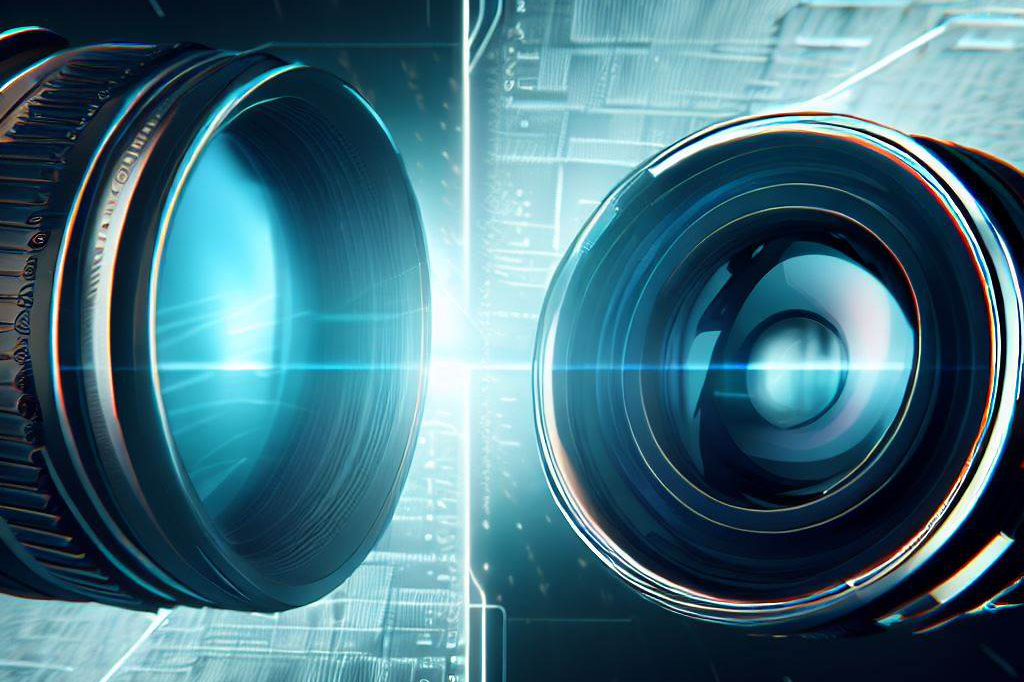
Do you ever find yourself picking up a new pair of glasses every couple of months because they get scratched easily? Well, NASA has solved that problem too!
In the early days of space exploration, NASA discovered that helmet visors were getting damaged by debris during missions, which led to the development of scratch-resistant coatings for these visors. These coatings are made from a variety of materials and work by creating a hard layer on the surface of the lens.
This layer is resistant to scratches and scuffs, providing longer-lasting protection for lenses. Eventually, these coatings made their way into eyeglasses as well as camera lenses.
Nowadays, it’s hard to find a pair of glasses or a camera lens without some form of scratch-resistant coating. Thanks to space exploration, we can enjoy clearer vision with less time spent worrying about scratches or damages!
The Surprising Ways Space Exploration Gave Rise to Everyday Technologies
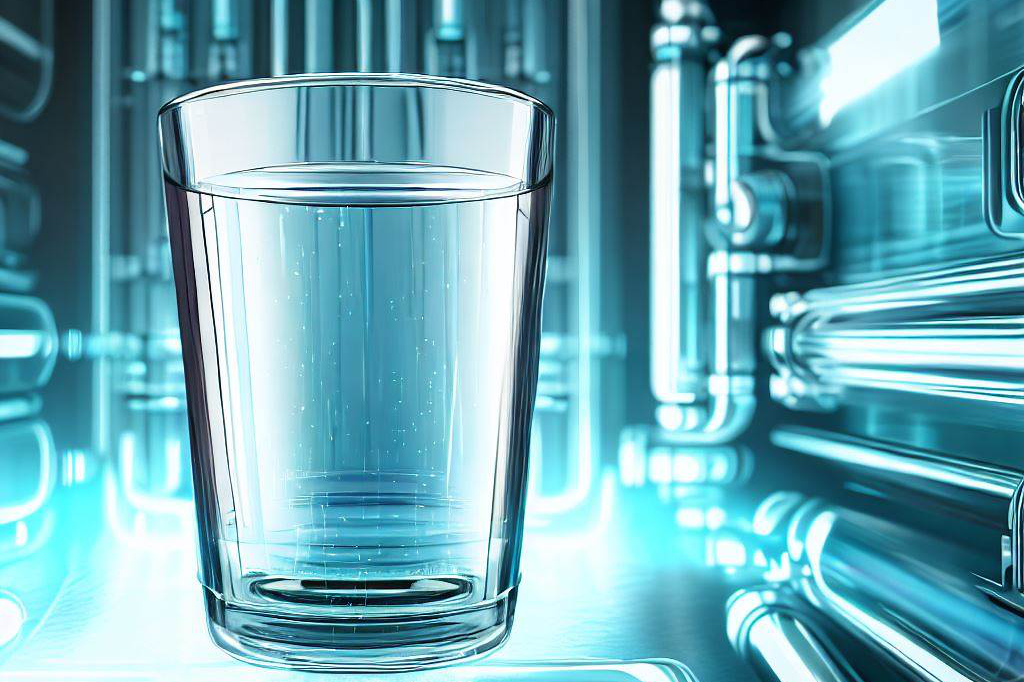
Clean Drinking Water Thanks to NASA
When most people think of space technology, they probably don’t think of clean drinking water. However, NASA’s quest for sustainable living on spacecraft led them to develop some highly effective water filtration systems.
These systems use a combination of activated carbon and ion exchange technology to remove harmful contaminants from water. Thanks to the success of these space-based filtration systems, we now have access to some high-quality water filters that are used in homes and offices all around the world.
Many popular brands of home-based water filters were developed based on NASA’s original designs. So while you may not be planning a trip into outer space anytime soon, you can still benefit from the technology that made it possible.
The Portable Power Tools That Were Born From Space Travel
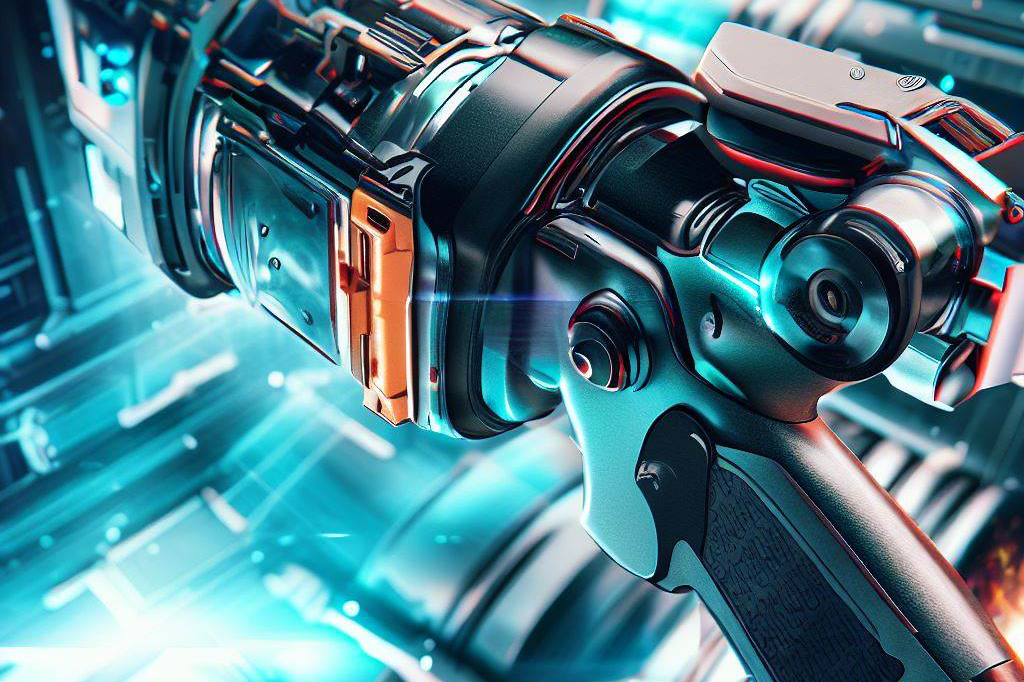
Cordless power tools might be a staple in most DIYers’ arsenals these days, but did you know that their origin can be traced back to NASA? Back in the early days of space exploration, astronauts needed portable tools that could be easily transported and used in zero-gravity conditions.
Enter cordless power tools: these devices allowed astronauts to work quickly and efficiently without being tethered by cords or cables. Though cordless power tools were initially developed for use in space travel only, they eventually made their way into everyday life as well.
Today, cordless drills and other similar power tools are widely available and often preferred over their wired counterparts due to their portability and ease-of-use. It’s an impressive example of how innovations spurred by one industry can quickly find their way into other industries – whether we’re talking about outer space or just our own backyards.
The Temperature-Measuring Device That Has A Special Place In Space History
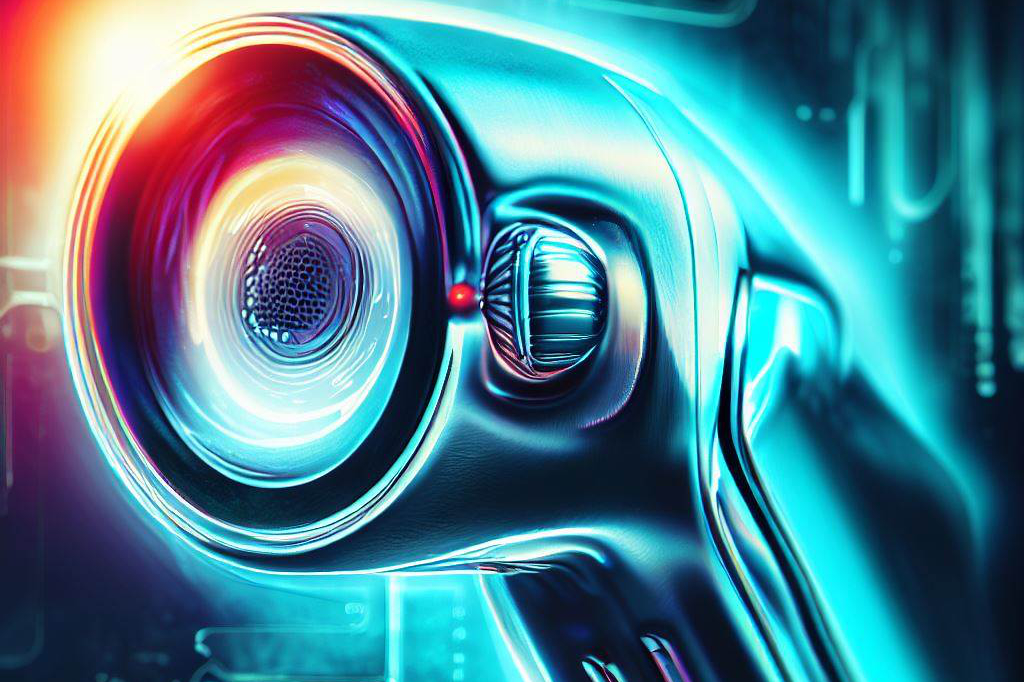
Infrared thermometers might be a common sight in medical facilities and other settings these days, but their roots can be traced back to NASA’s space program. The need to measure temperatures without physical contact led NASA scientists to develop the first infrared thermometer in the 1970s.
These devices use infrared radiation to measure temperature, which means they can provide quick and accurate readings without ever touching the object being measured. This technology quickly found its way into a variety of other industries and applications, from food service to automotive manufacturing.
It’s amazing to think that something as commonplace as an infrared thermometer has such deep roots in space travel. But this is just one example of how the innovations sparked by space exploration have gone on to shape our everyday lives in profound ways.
Final Thoughts
It’s clear that space exploration has had a significant impact on our everyday lives through its contributions to technological advancements. These innovations have not only made our lives easier but have also pushed us forward into new frontiers of scientific discovery. As we look towards the future, it’s exciting to think about what other breakthroughs might be just around the corner thanks to continued exploration beyond Earth’s atmosphere.
FAQs: Examples of everyday technologies originating from space exploration
1. Question: What are some examples of everyday technologies that originated from space exploration?
Answer: Space exploration has been a catalyst for numerous technological advancements that have found their way into our daily lives. Here are some notable examples:
2. Question: How has space exploration contributed to advancements in telecommunications?
Answer: Space exploration has played a pivotal role in revolutionizing telecommunications. Satellites, initially developed for space missions, now enable global communication by facilitating long-distance calls, television broadcasts, and internet connectivity.
3. Question: Can you provide examples of space-inspired materials used in everyday products?
Answer: Many everyday products incorporate materials that were initially developed for space exploration. For instance:
– Memory foam, invented by NASA, is widely used in mattresses, pillows, and seating for its pressure-relieving properties.
– Scratch-resistant lenses, developed for astronaut helmets, are now utilized in eyeglasses and sunglasses.
– Fire-resistant fabrics initially designed for space missions are now used in firefighter suits and protective clothing.
4. Question: How has space exploration contributed to advancements in medical technology?
Answer: Space exploration has had a significant impact on medical technology. Some examples include:
– Digital imaging technology, originally used to enhance images of the moon, has transformed medical imaging techniques such as X-rays, MRI scans, and ultrasound.
– Portable medical devices, initially developed for space missions, have made remote healthcare possible, allowing patients in rural or inaccessible areas to receive medical assistance.
– Infrared ear thermometers, inspired by temperature-measuring technology used in space, are now commonly used in households for quick and accurate temperature readings.
5. Question: What role has space exploration played in the development of GPS technology?
Answer: The Global Positioning System (GPS) relies on satellites orbiting the Earth, which were initially deployed for space exploration purposes. GPS technology is now integrated into a wide range of everyday devices, such as smartphones, navigation systems, and fitness trackers, enabling precise location tracking and navigation assistance.
6. Question: How has space exploration contributed to advancements in environmental monitoring?
Answer: Space exploration has been instrumental in improving our ability to monitor and understand the Earth’s environment. Some examples include:
– Satellite-based remote sensing allows for accurate monitoring of deforestation, land use changes, and climate patterns, aiding in environmental conservation efforts.
– Weather forecasting has greatly improved with the help of weather satellites, providing crucial information for disaster preparedness and agriculture.
– Ocean monitoring satellites help track sea surface temperatures, ocean currents, and marine life patterns, assisting in fisheries management and conservation.
7. Question: What innovations in energy have been influenced by space exploration?
Answer: Space exploration has spurred innovations in energy technologies. Some notable examples include:
– Solar panels, initially developed for space missions, are now widely used to harness renewable energy on Earth.
– Fuel cell technology, originally used to generate electricity for spacecraft, has found applications in electric vehicles and backup power systems.
– Improved battery technology, driven by the need for efficient energy storage in space missions, has led to advancements in consumer electronics and electric vehicles.
8. Question: How has space exploration contributed to advancements in consumer electronics?
Answer: Space exploration has had a profound impact on consumer electronics. Some examples include:
– Smaller and more efficient computer chips, initially developed for space missions, have driven the miniaturization and increased processing power of smartphones, laptops, and other electronic devices.
– CCD (Charge-Coupled Device) technology, used in space telescopes, has become the foundation for digital cameras and imaging devices.
– Dust-resistant and durable coatings developed for space equipment have found their way into smartphones and other gadgets, improving their longevity.
9. Question: How has space exploration influenced the development of transportation technology?
Answer: Space exploration has stimulated advancements in transportation technology. Notable examples include:
– Lightweight and high-strength materials, initially developed for spacecraft, have been utilized in the automotive and aerospace industries, resulting in more fuel-efficient and safer vehicles.
– Aerodynamic design principles derived from space exploration have been applied to improve the performance and fuel efficiency of airplanes and high-speed trains.
– Magnetic levitation (maglev) technology, initially explored for future space transportation, has been harnessed in high-speed trains for frictionless travel.
10. Question: How has space exploration contributed to advancements in water and food technology?
Answer: Space exploration has led to significant developments in water and food technology. Some examples include:
– Water purification systems used on spacecraft have been adapted for Earth-based applications, providing clean drinking water in remote or disaster-stricken areas.
– Advances in hydroponics and aeroponics, essential for growing plants in space, have influenced sustainable agriculture techniques, enabling food production in challenging environments.
– Freeze-drying technology, originally used for space food, has revolutionized the preservation and packaging of food, extending its shelf life and reducing waste.
These are just a few examples of the transformative impact of space exploration on everyday technologies. The pursuit of knowledge beyond Earth continues to drive innovation and shape our lives in numerous ways.
TL;DR…
– 💡 Space exploration has contributed to the development of numerous everyday technologies.
– 🌍 GPS navigation systems, memory foam, and scratch-resistant lenses are some examples of space-inspired technologies.
– 🚀 Space exploration has also influenced the creation of portable power tools and temperature-measuring devices.
– 💧 NASA’s advancements have led to clean drinking water solutions.
– 🔎 The surprising link between space exploration and everyday technology highlights the importance of space exploration in technological advancements.
– 🌌 Space exploration continues to inspire innovation and shape our daily lives.

C M, a seasoned editor, journalist, and consultant, is deeply fascinated by the convergence of technology, space, and the future of humanity.
With a particular interest in transhumanity, futurology, and the philosophical and ethical dimensions of these domains, C M serves as the lead contributor to SpaceSpotlight and TranscendSphere.
When not penning insightful articles on these rapidly evolving fields, C M indulges in their love for podcasts and books, proudly embracing their status as a ‘Happy Nerd Extraordinaire!’
